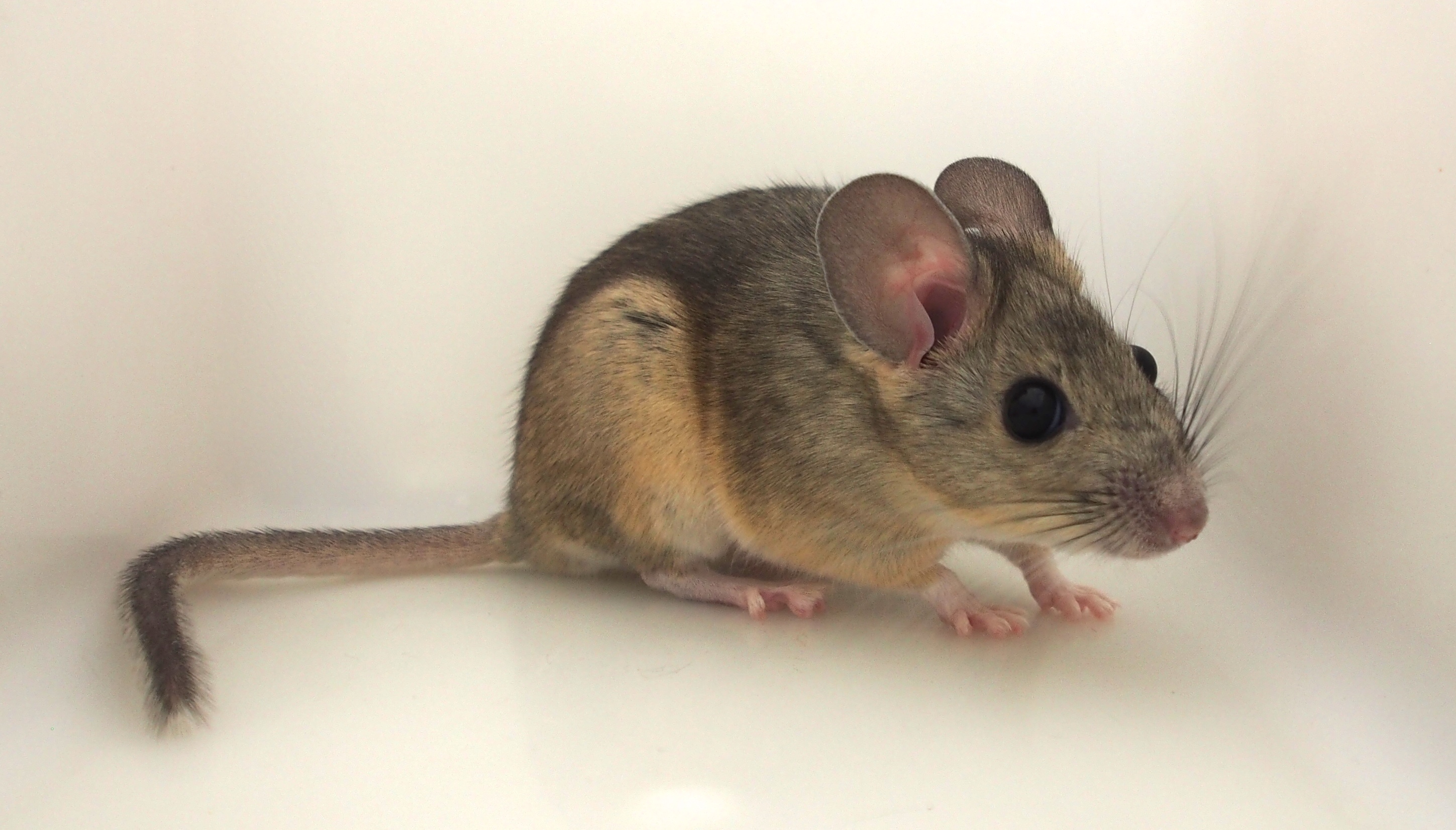You’d think desert woodrats already had a lot of adversity. Besides the constant threat of coyotes and other predators and the scorching Mojave Desert heat, their primary source of food is the creosote bush, or chaparral – a plant so toxic that few other animals will even go near it.
But the woodrats’ unique adaptation that allows them to break down creosote toxins may be in jeopardy if temperatures continue to rise, according to University of Utah researchers. Their new study in Molecular Ecology explains why: Livers of mammals (including us) may be less efficient at breaking down toxins at higher temperatures.
“It seems like there’s more going on in the liver at cooler temperatures,” says Patrice Kurnath Connors, a postdoctoral scholar in the U’s Department of Biology and first author of the new study. The research was funded by the National Science Foundation and the Global Change and Sustainability Center at the University of Utah.

PHOTO CREDIT: Kevin Kohl
A desert woodrat.
Hardy woodrats
Biology professor Denise Dearing has been studying desert woodrats for more than 20 years. They’re about the size of large hamsters, but through building of nests, or middens, woodrats have documented thousands of years of climate and vegetation history in the Southwest.
They also follow a peculiar diet among rodents. They’re one of the few families of rodents that specialize in eating plants. Others eat seeds or have an omnivorous diet. And woodrats’ specialization goes even further. Dearing says that the Stephen’s woodrat of northern Arizona almost exclusively eats juniper. “It ingests a dose of turpentine that would kill a human, every day,” she says. “Phenomenal species to study.”
Previous studies examined the ways woodrats regulated their intake of poisonous plants, and observed that when temperatures go up, desert woodrats eat less of foods containing creosote. Dearing and Connors suspected that a difference in the functioning of the liver, which processes and breaks down toxins, may account for the woodrats’ decreased tolerance at higher temperatures.
Stressed livers
In their new study, Dearing and Connors looked at which genes were turned on or turned off in the woodrat livers at elevated temperatures. The high temperatures actually weren’t that high for an animal that lives in the Mojave Desert – 79 degrees Fahrenheit compared to 71 F for the animals kept at “cool” temperatures.
“These are desert animals,” Connors says. “Those are temperatures that are no big deal for them. But we’re still seeing differences in gene expression in the livers at these temperatures.”
When comparing liver gene expression in warm and cool woodrats, Connors saw that the activity of the main detoxification pathways was essentially unchanged, but that warm woodrats had about half of the liver gene activity of the cool woodrats. The most significant differences were in genes pertaining to metabolism. One gene regulated metabolism of vitamin A, which may be a precursor to detoxification enzymes. Another gene is associated with a process called gluconeogenesis, which generates glucose from breaking down proteins and lipids.
“It’s something your liver does when it’s stressed for energy,” Connors says. “It’s not an ideal way to make energy in the liver.”
It’s not just woodrats
Woodrats’ slowdown in liver function isn’t totally surprising, since “temperature-dependent toxicity” also affects other mammals, including humans. In 1959, pharmacologists at the University of Miami tested the toxicity of 58 compounds in rats held at temperatures ranging from 46 F to 96 F. Two-thirds of these compounds were most toxic at high temperatures and also least toxic at intermediate temperatures.
For humans, that means a Tylenol taken in July could remain in effect longer than one taken in January, since a liver in cooler temperatures is more efficient at clearing drugs and toxins from the body.
The reason for the effect may have to do with the body’s strategies for heat management. The liver is a large organ and produces heat as part of its regular biological processes.
“You don’t want your liver working overtime during the summer, or it’ll get too hot,” Connors says. “There’s this tradeoff we think, between this role that the liver plays in thermoregulation, as well as detoxification.”
Effect of losing woodrats on environment
For woodrats, the monthly maximum temperatures in their home habitat haven’t increased by much since 1989, according to weather station data. But average minimum temperatures in July are around 5 F warmer now.
If desert woodrats can no longer tolerate their preferred diet, they could be forced to shift their range into cooler temperatures. This could have ripple effects for smaller mammals that inhabit abandoned woodrat middens, as well as owls and coyotes that rely on woodrats as a food source.
Now Dearing and Connors’ collaborators in Australia are asking the same questions about large marsupials that eat eucalyptus leaves. “It’s a different toxic challenge,” Connors says. “This could be a big thing for mammalian herbivores.”
Once the paper publishes, it can be found here.



